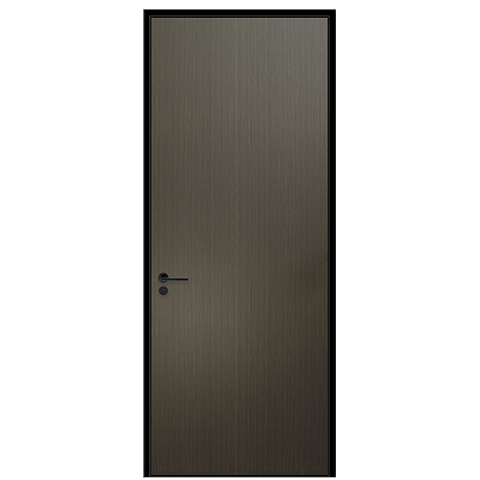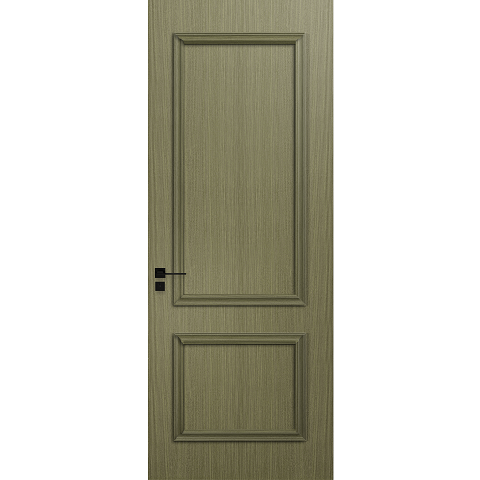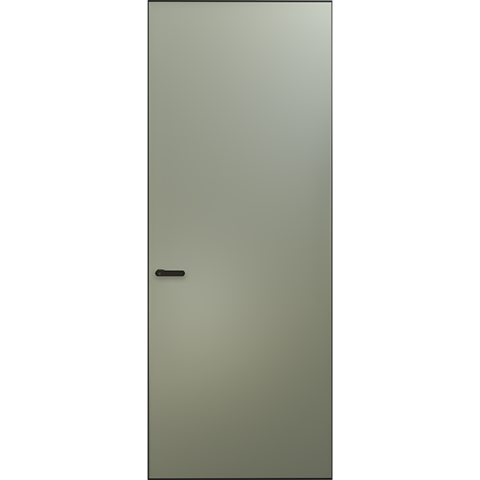Will the position of Low-E glass coating surface affect the performance of insulating glass?
This paper mainly analyzes the influence on the U value and shading coefficient of Low-E insulating glass, especially the three-glass Low-E insulating glass when the coating surface of Low-E glass is placed in different positions. The corresponding relationship of the shading coefficient and the change of the U value of the glass after the insulating glass is filled with inert gas are discussed, in order to provide the use method of Low-E glass for the design of energy-saving doors and windows.
The types of insulating glass currently used are mostly double-glass hollow, triple-glass hollow, double-glass Low-E hollow and other products. With the improvement of energy-saving performance requirements for doors and windows, the configuration of insulating glass for doors and windows is also changing to double-glass Low-E hollow (offline, double-silver), triple-glass Low-E hollow, triple-glass double-piece Low-E or warm edge, With the development of technologies such as inflation, the energy-saving performance of glass will be significantly improved.
People pay more and more attention to the selection of Low-E glass, and its product series, specifications and varieties are becoming more and more refined, and more new products have appeared for different energy-saving performance requirements.
Properties of Low-E Glass
Low-E glass (also known as low-emissivity coated glass) is the abbreviation of Low Emissivity Glass. The product has high transmittance to visible light, high reflectivity to infrared (especially mid- and far-infrared), and good thermal insulation performance. It can play the role of controlling sunlight, saving energy, controlling and regulating heat and improving the environment.
The surface emissivity e of ordinary glass is about 0.84, and the surface emissivity of online Low-E glass is generally below 0.25. This low-emissivity film with a thickness of 80nm to 90nm has a high reflectivity to far-infrared thermal radiation, and can reflect more than 80% of far-infrared radiation back, so Low-E glass has a good function of blocking thermal radiation transmission. .
The radiant light of the sun can be mostly transmitted to the interior through the insulating glass, which brings light and warmth to our life. Indoor items will re-radiate (long wave) due to their own warm temperature, and transfer a certain amount of heat to the outdoors through insulating glass.
The insulating glass made of low-emissivity coated glass will transmit most of the visible light and solar energy in the sunlight into the room, and effectively prevent the re-radiation (long wave) in the room from being transmitted to the outside through the glass, so as to reduce the U value of door and window products. Purpose.
In winter, the design of low-radiation insulating glass in northern cities in my country mainly considers shielding ultraviolet rays, high transmission of visible light (improving the utilization of natural light), high transmission of near-infrared rays (obtaining solar thermal energy), and long wave (2.5μm ~ 50μm). between) and low transmission (prevents heat loss in the room).
In summer, the design of low-radiation insulating glass in southern cities in my country mainly considers shielding ultraviolet rays, high transmission of visible light (improving the utilization of natural light), low transmission of near-infrared rays (shielding solar heat), and long wave (2.5μm ~ 50μm) The low transmission of the room) prevents the heat radiation of outdoor items (roads, buildings, etc.), and also prevents the loss of indoor air conditioning.
The effect of the e value of Low-E glass on the difference between online Low-E glass and offline Low-E glass Because Low-E glass is a film series product composed of one or several layers of silver metal film or other compounds coated on the glass surface, The film layer has a very low surface emissivity, and radiates far-infrared heat energy with a wavelength of 2.5 μm to 40 μm back. The lower the emissivity e value of Low-E glass, the lower the U value of the glass, and the better the thermal insulation effect.
According to different processing techniques, Low-E glass can be divided into online Low-E glass and offline Low-E glass.
The main difference between the two is the e value of Low-E glass, generally the e value of online Low-E glass is around 0.30 to 0.16;
The e value of offline single silver Low-E glass is generally around 0.15 to 0.08; the e value of double silver Low-E glass is generally around 0.05 to 0.07;
The e value of triple silver Low-E glass is generally around 0.02. The emissivity e of ordinary transparent glass is 0.84, which means that 16% of the far-infrared heat energy with wavelengths between 2.5 μm and 40 μm can be radiated back.
For example, No. 253 in the national glass database is offline low-emissivity coated glass, and its emissivity is 0.08, which means that 92% of the far-infrared heat energy with a wavelength of 2.5μm to 40μm can be radiated back, making the energy saving effect of insulating glass more obvious. .
Offline Low-E Glass
Generally, the film system is composed of several to a dozen layers of film layers, and the coating material is metallic silver, of which only the silver film layer plays the role of low radiation, and the other film layers are all protective and transitional layers. Using the vacuum magnetron sputtering process, a single-layer, double-layer or multi-layer silver functional film is plated on the glass surface, and a multi-layer dielectric film needs to be added on both sides of the silver.
In order to pursue higher energy-saving requirements in different regions, double-silver and triple-silver low-emission coated glass have appeared one after another. Its film structure is more complex than ordinary Low-E film layers. Double-silver (triple-silver) Low-E glass highlights the shielding of solar heat radiation by glass. It filters sunlight to the greatest extent as a cold light source, and solves the problem of high visible light transmission. Therefore, the effect of high visible light transmittance and low solar thermal radiation transmittance is obtained at the same time.
Online Low-E Glass
Online low-e coating glass has high hardness and is not easy to be scratched, so it is called hard coating. Its production is carried out at a certain temperature, called chemical vapor deposition. The coating material is tin oxide, and its film thickness is 20 times that of offline, but it is also quite thin.
The spectrum of offline Low-E glass shows the characteristics of silver and tin oxide composite film, while the spectrum of online Low-E glass shows the characteristics of tin oxide conductive film, both of which have good transmission for visible light, while the former for near infrared light is better. The latter has a much higher reflection, and the former absorbs less and reflects more far-infrared radiation than the latter. Therefore, online Low-E glass has higher shading coefficient and higher heat transfer coefficient compared to offline Low-E glass.
In the application, the glass varieties should be selected according to the design requirements for the performance of doors and windows. At the same time, the U value of Low-E glass, the shading coefficient S C, and the e value of Low-E glass should be selected. The glass varieties meet the requirements of the U value of the glass and meet the design requirements for the shading coefficient S C. The e value of different Low-E glass has a great influence on the glass U value and shading coefficient. Correctly understanding the e value of Low-E glass will have great reference value when selecting glass varieties.
Influence of Low-E Coating Surface Position on Insulating Glass
As shown in the figure above, the outdoor side surface of the two pieces of insulating glass is the first side, the indoor side inner surface is the fourth side, and the second and third sides are respectively located in the middle of the interior of the insulating glass.
The low-emissivity coating is located on the second or third side, which has little effect on the U value of the two pieces of insulating glass, but has different shading coefficients (No. 6-7 in Table 1).
When Low-E glass is on the third side (5mm+12Ar+6mm):
U=1.728, SC=0.819, g=0.712;
When Low-E glass is on the second side (5mm+12Ar+6mm):
U=1.729, SC=0.593, g=0.618.
When the low-e coating in the north of our country is located on the third side, a lot of solar energy will be obtained in winter, and the cost of cooling will be increased in summer.
Tianjin is located in the cold (B) region, and its climate characteristics are cold in winter and hot in summer. Therefore, to determine the position of the Low-E glass surface, it is necessary to consider not only the heat obtained from solar energy in winter, but also the energy consumed by air conditioning and refrigeration in summer, and the shading coefficient ( SC) cannot be too large.
Comprehensive consideration, it is suggested that the low-emissivity coating should be located on the second side of the window glass in Tianjin, which can prevent the solar heat from entering the room and at the same time have a good thermal insulation effect.
Configuration of two-cavity three-glass hollow Low-E glass surface
Effects on glass properties
We used Yuejianke's MQMC thermal software to calculate the energy-saving effect of the two-cavity triple-glass hollow Low-E glass in different positions of the coating surface, which is summarized in Table 1.
glass surface determination
The glass surface of the double-glass insulating glass, the outdoor side is the first side, from the outdoor to the indoor side is the second side and the third side, the fourth side is the indoor side, and the outdoor side is the first side in the case of triple glass, and so on. 2, 3, 4, 5, and the 6th side is the indoor side.
Three-glass hollow monolithic Low-E glass coated surface
location determination
The three-glass hollow monolithic Low-E glass coating surface has different positions, and the parameter results are shown in Table 2. It can be seen from Table 2 that the U value of the glass does not change much with the different positions of the film surface, and the U values are all between 1.471 and 1.452. Different locations have the same thermal insulation and energy saving effect, but the shading coefficient Sc varies greatly from 0.481 to 0.715.
From a U-value perspective, the four options (side 2, side 3, side 4, and side 5) all have the same value. From the perspective of Sc, the second side is the smallest and the fifth side is the largest. The larger the Sc, the more solar energy is obtained, and vice versa.
If you choose Sc (0.715) on the 5th side, you can get more heat in winter, but you will pay more air-conditioning costs in summer. The corresponding membrane surface position should be determined according to the design requirements, because Tianjin is cold (B) In the area, we suggest that it should be placed on the 2nd and 4th sides. It can get enough heat in winter and pay relatively less air-conditioning costs in summer.
The glass U value and shading Sc change table when the coated surface of Low-E insulating glass is in different positions:
Note: In the case of double glass, the glass surfaces of the two pieces of glass are the outdoor side 1, 2, 3, and the fourth side are the indoor side; in the case of triple glass, the outdoor side is still 1 side, and so on for 2, 3 , 4, 5, and 6 are indoor sides.
e is the emissivity of Low-E glass. The lower the emissivity, the better the energy-saving performance of the glass. Generally, it is about 0.25 for online, less than or equal to 0.15 for offline, about 0.1 for good offline, 0.05 to 0.07 for double silver, and 0.07 for triple silver. around 0.02.
Comparison table of glass U value and shading coefficient Sc of three-glass hollow monolithic Low-E glass coating surface in different positions:
Comparison table of glass U value and shading coefficient Sc when the coated surface of triple-glass hollow double-piece Low-E glass is in different positions:
It can be seen from Table 3 that the use of two pieces of Low-E glass is mainly to improve the energy-saving performance of the glass configuration and obtain a better energy-saving effect. The 3rd, 5th and 2nd and 4th sides), the glass U value is the same as 1.183, the use of double-piece Low-E glass, its energy-saving performance is significantly improved, but the Sc is very different (Sc are 0.603 and 0.401, respectively ) is very different. Which combination to choose should be determined according to the design requirements. We recommend choosing 2 combinations, that is, placing the membrane surface on the 2nd and 4th surfaces, which will achieve greater energy-saving effect. For details, please refer to the data provided in Table 1.
Low-E insulating glass after inflation Impact on energy saving performance
As can be seen from the table below, for the same glass type (the e value of Low-E glass is 0.30 or 0.24 or 0.16 or 0.09), the changes after inflation are quite different, such as:
The U value of the first and second groups of ordinary insulating glass differs by 2.66-2.502=0.158;
The e value of the third and fourth groups is 0.30, and the U value difference is 2.079-1.837=0.242;
The e value of the fifth and sixth groups is 0.24, and the U value difference is 1.983-1.728=0.255;
The e value of the seventh and eighth groups is 0.16, and the U value difference is 1.854-1.576=0.278;
The e value of the ninth and tenth groups is 0.09, and the difference between their U values is 1.740-1.445=0.295.
As the e value of Low-E insulating glass continues to decrease, the contrast difference of the U value of the inflated glass will also increase from 0.242 to 0.295, an increase of 21.9%. As the e-value of the glass decreases, the energy-saving effect after inflation becomes more and more obvious, such as the difference between the first and second groups of ordinary insulating glass after inflation (0.158), and the difference between the 9th and 10th groups with the best glass e-value after inflation ( 0.295) compared to (0.295-0.158=0.137), an increase of 86.7%. Therefore, the lower the e-value of the glass, the better the energy-saving performance, and the greater the reduction in the U-value of the glass after inflation.
If Low-E glass is added to the insulating glass and then filled with inert gas, the U value of the glass can be greatly reduced. Table 4 Group 17 is triple-glass hollow with a U value of 1.776; group 21 is triple-glass hollow with the addition of Low-E glass whose U value is 1.263, an increase of 40.6%; group 22 is triple-glass hollow with Low-E filling gas, Its U value is 1.043, which is 70.2% higher than that of the 17 groups. Therefore, in order to greatly reduce the U value of glass, it is necessary to use both Low-E glass and gas to obtain better energy-saving effect.
 Hot Recommendation
Hot Recommendation
 Latest Products
Latest Products



